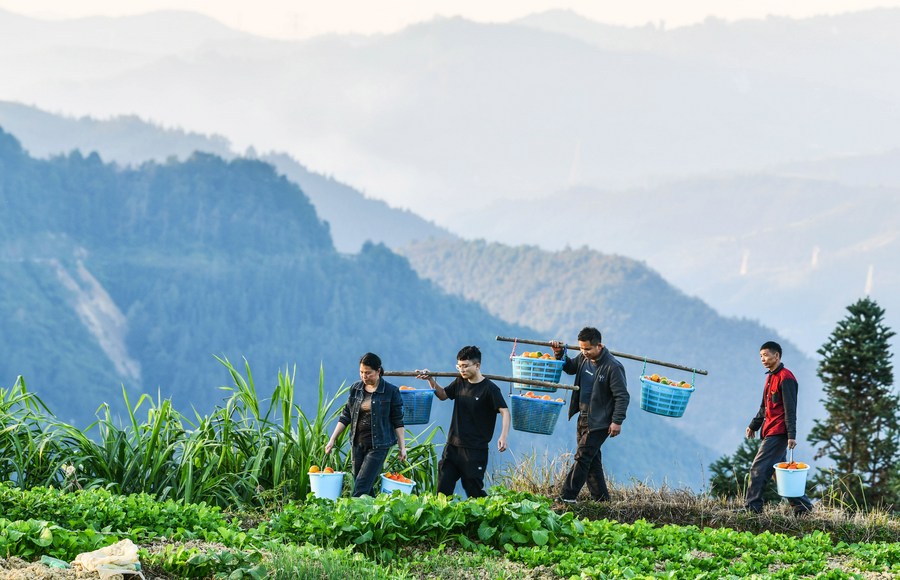The third phase of the South-South Cooperation: A new chapter of partnership between China, Uganda and FAO

By Shemei Ndawula
The people of the People’s Republic of China as well as the people of Uganda have got a striking similarity which; as I have come to notice, has been largely under looked in most Sino-Ugandan (African) studies. We as Africans call it Ubuntu; the belief that the individual is an inherent part of the whole community and the intrinsic desire to look out for one another. This has never been so prominently displayed as with the tripartite South-South collaboration between China and Uganda.
I have witnessed the challenges and opportunities that Uganda faces in its quest to achieve food security, poverty reduction, and environmental sustainability. I have also seen the potential and promise that Uganda has to become a regional and continental leader in agriculture and agribusiness.
That is why I am exceptionally thrilled to witness the third phase of the South-South Cooperation (SSC) project between China, Uganda and the Food and Agriculture Organization of the United Nations (FAO) rollout. The SSC is a mutual sharing mechanism that allows for the exchange of development solutions between and among countries in the global South. The SSC aims to enhance the capacities of developing countries to achieve their development goals through knowledge, experience, technology, and resource sharing.
This collaboration between China, Uganda and FAO was launched in 2012 with an initial funding of $3 million from China. The project was focused on improving crop production and productivity, especially for rice and maize, through the introduction of improved seeds, fertilizers, irrigation systems, and mechanization. It also sought to support the development of aquaculture and livestock sectors, as well as the establishment of demonstration farms and training centers.
The project achieved remarkable results in its first phase (2012-2015), such as increasing rice yields by 150%, maize yields by 50%, fish production by 30%, and milk production by 20%. The project also created more than 10,000 jobs and benefited more than 100,000 farmers.
Based on the success of the first phase, the project was extended for a second phase (2016-2019) with an additional funding of $5 million from China. The second phase expanded the scope of the project to include more crops, such as cassava, banana, soybean, and vegetables. This investment also went a long way in strengthening the capacity building of farmers, extension workers, researchers, and policy makers through facilitating training courses, study tours, workshops, and seminars. This partnership has also enhanced the collaboration between the National Agricultural Research Organization (NARO) of Uganda and the Chinese Academy of Agricultural Sciences (CAAS) for joint research and innovation.
As would be expected, the second phase of the project also delivered outstanding results, such as increasing cassava yields by 100%, banana yields by 50%, soybean yields by 40%, and vegetable yields by 30%. The project also improved the quality and safety of agricultural products through the adoption of good agricultural practices (GAP) and standards. This has gone a long way in increasing the income and food security of farmers through creating better market linkages and value addition.
In January 2023, the project entered its third phase (2023-2026) with a funding of $12.6 million, out of which $10 million is committed by Uganda and $3 million by China. This ($10 million) is one of the most significant contributions by a Least Developed Country as a beneficiary nation for a SSC project. The third phase aims to scale up the achievements of the previous phases and consolidate the sustainability of the project.
The third phase will focus on four key areas: crop production and productivity; agro-processing and value addition; agribusiness development and market access; and policy support and institutional strengthening.
This phase will also align its activities with Uganda’s national development plans and strategies, such as Vision 2040, National Development Plan III, Agriculture Sector Strategic Plan, Parish Development Model, among others. The third phase looks at integrating cross cutting issues such as gender equality, youth empowerment, climate change adaptation and mitigation, and digital transformation into the joint effort by the tripartite
The third phase will also involve more stakeholders from both public and private sectors, such as local governments, civil society organizations, farmer associations, cooperatives, agro-industries, financial institutions, and media.
The third phase will also leverage more resources from other development partners and donors, such as the African Development Bank, the World Bank, the European Union, the United States Agency for International Development, and others. The third phase will; basing on lessons learned in the previous rollouts showcase more effective practices and success stories from both China and Uganda to inspire other countries and regions to join or replicate the SSC model.
The third phase thus marks a new chapter of partnership between China, Uganda and FAO. A partnership that is based on mutual respect, mutual benefit, and mutual learning. A partnership that is driven by innovation, collaboration, and transformation. A partnership that is aimed at achieving the Sustainable Development Goals and the Agenda 2063 for a better future for Africa and the world. A partnership that highlights out what we’ve learned to expect from all Sino-Ugandan partnerships, effective, efficient and timely delivery.
Shemei Ndawula is a research fellow Sino-Uganda Research Centre
related publications
DWC
Development Watch Centre
Kampala - Uganda
ADDRESS
Plot 212, RTG Plaza,3rd Floor, Office Number C7 - Hoima Road, Rubaga
CONTACT
+256 703 380252
info@dwcug.org




